Armand (post 1930)
Continued from: Armand
Carl Weeks must have been feeling very positive about the future of Armand and its subsidiaries for most of 1929. Armand had reported its best ever sales in 1928, Florian, Inc. had begun releasing a new line of men’s toiletries, and Carlé, Inc. had debuted the first product of a planned new range. Then came the stock market crash of October, 1929.
The looming depression caused Weeks to change his plans, starting with the Carlé line where further developments were put on hold. In 1930, Weeks then moved Florian from Detroit back to Des Moines after F. F. Ingram Jr., the vice president and general manager of Florian, resigned. Armand also reigned in its overseas interests. Advertising in Britain and Australia stopped after 1930 and sales appear to have dwindled. This situation looks to have been replicated in Europe. Florian et Armand, established in Paris in 1923, was dissolved in 1936.
There had been some worrying developments for Armand before the stock market crash. Competition and consumer expectations for cosmetics had risen in the 1920s, led by the expansion of salon-based companies run by women such as Helena Rubinstein, Elizabeth Arden and Dorothy Gray. In comparison, the Armand range was rudimentary at best. This may be why Weeks introduced a fictitious female consultant – Jeanne Armand – into some of the company’s literature in the late 1920s. Perhaps he was told that a female persona would give the company’s products more credibility. If so, it is unlikely that Weeks was convinced, as references to Jeanne Armand disappeared in the 1930s.
Symphonie Powder
Following the stock market crash, Carl Weeks placed his hopes for Armand on its new Symphonie Powder. Trademark documents state that the Symphonie name was first used in November, 1929 as a shade name but Armand also advertised Symphonie as a new powder from 1930.
Weeks said he got the idea for Symphonie from a painting by Marzio, a pupil of Velasquez, that he bought from an antique shop in one of his trips to England. After the painting was restored he compared the flesh tone of the woman in the picture with other portrait paintings and came to the conclusion that the flesh tones in all the paintings were the same. Somehow or other, this led him to the conclusion that what women needed was a powder that revealed, not concealed, their underlying skin-tones.
I found the underlying flesh tints in the painting by these masters exactly the same. A theory was born—the theory that women’s faces needed was. Not cooler laid on, but a finish added, something that, instead of concealing the loverly, natural flesh-tone, would reveal the individual texture, and the tone Old Masters and New have made immortal on their canvases.
(Armand advertisement, 1931)
Combined with a new perfume, the Symphonie Powder was therefore based on the idea that applying a transparent powder to the skin would allow the skin’s natural colour to come through. This meant that it was suitable for all skin colour types including blonde, grey, medium, auburn, and deep brunette.
Test this new tint! Know the “Symphonie” skin-tone!
It’s so new…so important with current fashion…so different from anything known before in cosmetic arts!
“Symphonie” is the subtle new powder-blend that’s keyed to the underlying flesh-tones…soft translucent tints which are essentially the same in both blonde and brunette. For years, women have been “coloring” this natural complexion-tone with pale and unnatural face powder, but “Symphonie” complements the flesh tints in their basic color and brings creamy new beauty to every skin!(Symphonie Powder advertisement, 1930)
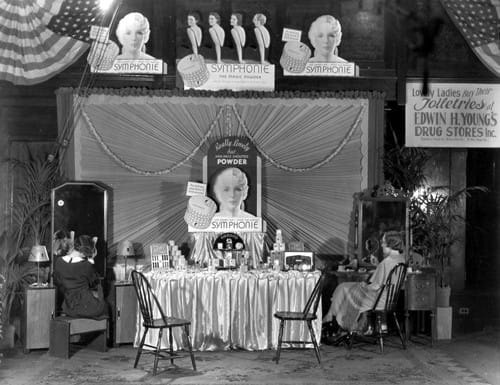
Above: c.1932 An exhibition of Armand skin-care cosmetics and make-up highlighting Symphonie Powder.
Does the wood finisher mix a separate finish to match the color of each wood? He does not. The beauty is in the wood, and he will take one—just one—transparent finish and use it on all his woods.
… One perfect finish is right for all woods—can the same principle be applied to a thousand faces?
Let us ask every woman to use one transparent finish, instead of try to concoct a finish to match each face. This single finish must show every woman’s inherent beauty—it must be characteristic of the woman it adorns. It must be, therefore, the one perfect, transparent finish—SYMPHONIE POWDER.(Symphonie Powder advertisement, 1932)
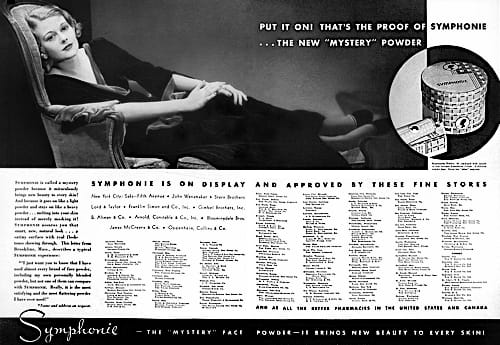
Above: 1932 Armand Symphonie Powder with a list of stores where it could be purchased.
The idea of transparent powders would be picked up by other cosmetic companies in the 1940s, beginning with Westmore’s Overglo Face Powder (1944). However, these later powders were usually applied over a tinted foundation that did the colouring and concealing work previously handled by the face powder. To follow Armand’s ‘wood’ analogy, wood was often stained before a clear varnish was applied.
See also: House of Westmore
Armand did not sell a range of coloured foundations to go with the Symphonie Powder so, despite an extensive advertising campaign, sales were well below expectations. Women did not appear to take to a face powder that only reduced shine. In 1933, to help improve sales, Armand resorted to giving away free mirrors – the Symphonie Truth Glass – with every purchase of a regular $1.00 box of Symphonie Powder sold through selected department stores.
Repackaging and resizing
Like many other cosmetic companies, Armand modernised its packaging during the early 1930s, in the hope that this would increase sales.
The new design for the Symphonie Powder reduced the amount of the plaid pattern used on the box, and this idea was carried over to the cartons used to package Armand creams including those packed in tubes. Some Armand bottles and jars were also redesigned; the astringent bottles in 1931, and the cream jars in 1933.
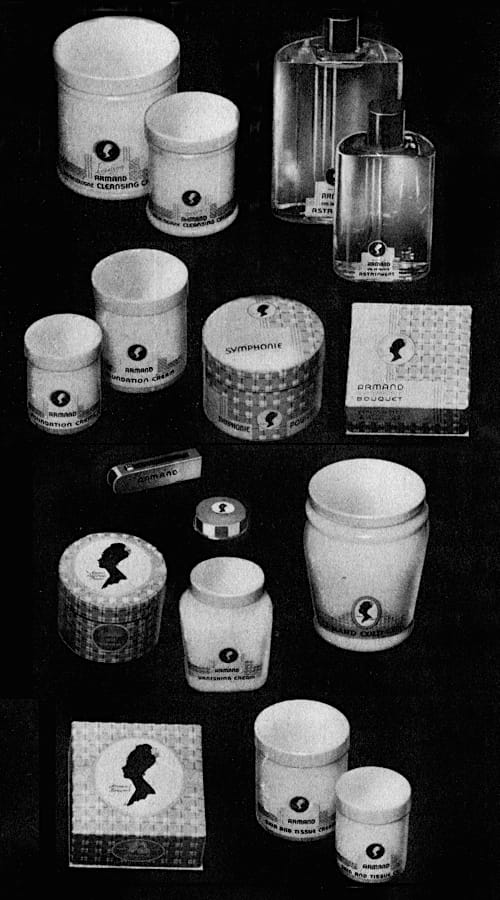
Above: 1935 Armand Cleansing Cream, Eau de Cologne Astringent, Foundation Creme, Symphonie Powder, Symphonie Bouquet Powder, Automatic Lipstick, Rouge, Cold Cream Powder, Vanishing Cream, Cold Cream, Bouquet Powder, and Skin and Tissue Cream.
Another common response of cosmetic companies to the Depression was to introduced products in smaller, cheaper sizes. Armand did this as well adding 25¢ and 20¢ packages for some of its products.
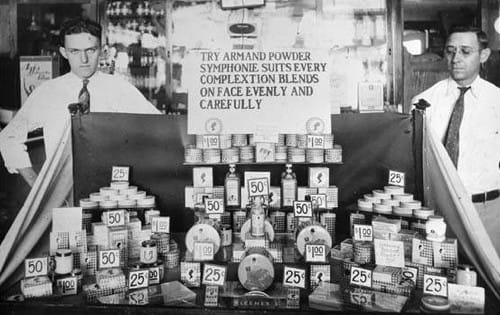
Above: 1933 In-store display of Armand products including many in the 50¢ and 25¢ category.
Anniversary
There were also some major changes to Armand and associated businesses during 1935 as Armand celebrated its 20th anniversary year.
Charles Weeks, Carl‘s oldest son, resigned from Armand, as did Henry Miller, who had been the company’s chief chemist for the past decade. Carl placed his son, William Weeks in charge of sales while Evert ‘Hud’ D. Weeks became the general manager of D. C. Leo & Company. The D. Weeks and D. C. Leo Company companies were merged to form Weeks & Leo Company, Inc. which continues to operate today as a private label drug and toiletry manufacturer.
On a more positive note, 1935 also saw Armand engage the services of the industrial designer Martin Ullman [1895-1981] to remodelled its entire line. Completed in 1936, the new packages were cleaner and whiter than previous designs and made little or no use of the the old red, white and blue plaid pattern. It would creep back in later.
Two new lines that Armand had debuted as a part of its anniversary celebrations – Armand Blended Cream, and Wind Blown Roses Powder – were also packaged in Ullman designs. Both products were scented with the new Wind Blown Roses fragrance that Armand began selling as a perfume in 1936. Collectively, these were the first new products added by Armand since an Automatic Lipstick, and Armand Dusting Powder had been introduced in 1933.
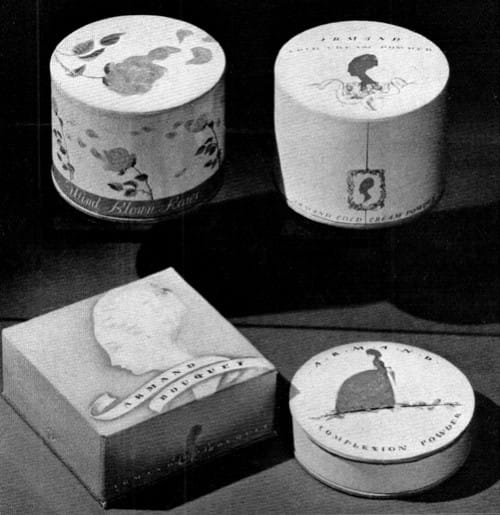
Above: 1936 Armand Wind Blown Roses Face Powder, Armand Cold Cream Powder, Armand Bouquet, and Armand Complexion Powder in new packaging.
The new Armand Blended Cream joined a number of cost-cutting, all-purpose creams introduced by other cosmetic companies in the 1930s. Armand claimed that it could be used as a cleanser, freshener, powder base, massage cream, and night cream.

Above: 1936 Armand Blended Cream.
Blended Cream/Blended Face Cream: “[I]s an excellent lubricant. Its softening ingredient is chemically related to natural skin oil. It effectively cleanses to your skin because it mixes with both oil and water. Since dirt on the face mixes with or is soluble in oil and water a cream that mixes with both oil and water helps remove both kinds of dirt for more thorough cleansing.”
The multipurpose nature of Armand Blended Cream allowed Armand to use it in a simplified beauty routine.

Above: 1935 Armand Simplified Beauty Treatment with Blended Cream substituted for cleanser, astringent and foundation.
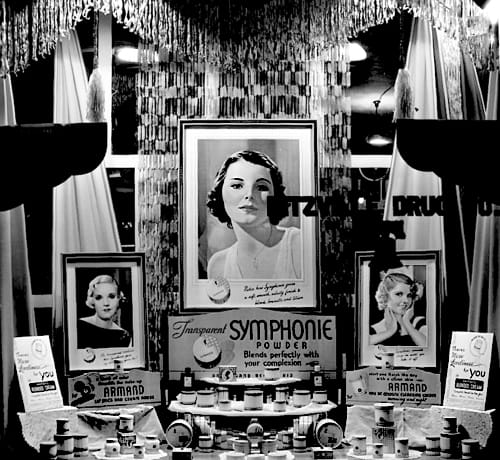
Above: c.1935 Armand window display featuring Symphonie Powder and Armand Blended Cream.
See also: All-Purpose Creams
Armand Blended Cream arrived after Lady Esther introduced its popular 4-Purpose Cream (1931) and there may be some significance to Blended Cream’s promise to have five uses rather than four. Lady Esther also had a great deal of success with its face powder ‘Bite Test’ in 1935 and Armand many have tried to emulate this with its ‘Cold Water Test’ in 1936. This test supposedly proved the superiority of Blended Cream to other all-purpose creams then on the market.
Take about half a teaspoon of the cream you are now using and work it well into. Your hands. Then wash your hands with plain cold water, without soap and see if you can get all the cream off. …
Second ‘Cold Water Test’—To your dry hands apply about half a teaspoon of armand Blended Cream and work well into your hands. Then wash your hands with plain cold water—no soap—and note that it washes away easily and quickly with cold water. …
The ‘Cold Water Test’ proves that Armand Blended Cream is not sticky, greasy or messy; it proves that this remarkable all-purpose cream is far more delightful to use than any other face cream you have every known. That is because there is no clogging wax and no heavy oils or grease in Armand Blended Cream—it is just pure, light, soft velvety cream that benefits. Armand Blended Cream is a combination of ingredients never before used in a cream. That is why you can use it for cleansing, for powder base, for massage, and wear it gloriously as a night cream, with no greasy pillow cases.(The Armand Company, 1936)
See also: Lady Esther and The Bite Test
The Federal Trade Commission
Armand’s anniversary year also marked the end of a long running dispute the company had with the Federal Trade Commission (FTC). This had begun in 1925 when the FTC issued a formal complaint against Armand claiming it violated the terms of the Clayton Antitrust Act of 1914, an Act the FTC had been set up to enforce.
The complaint concerned Armand’s practice of fixing retail prices and refusing to sell to price cutters, a policy that Armand had codified in 1919 to help protect small businesses from undercutting by chain stores. Armand lost its last appeal against the order in 1935. It could still refuse to sell it products to certain customers but it could no longer specify prices or stop resellers. This undermined its long-standing relationships with small-town drug stores. Although the Miller-Tydings Enabling Act (1937) subsequently enabled companies to establish minimum prices in states that had fair trade laws, some damage to Armand had been done.
Smart and safe
The FTC also interfered with Armand’s safe cosmetics campaign that began in the late 1930s and continued into the 1940s, particularly when Armand claimed that a product was non-allergenic. In 1938, after Armand advertised that Armand Blended Cream was non-allergic, the FTC forced the company to modify this claim on the grounds that no product could guarantee this for every user.
Following the FTC stipulation Armand switched to claiming that its products were ‘as near as possible to non-allergenic’ and sort support for this claim from the American Medical Association. In an open letter to the medical profession, posted as an advertisement in ‘The Journal of the American Medical Association’ (1941), Weeks laid out the ingredients in Armand Face Powder and Armand Blended Cream to show that both products were made with chemicals that were not only safe but were also unlikely to irritate or produce an allergic reaction.
In this open letter, Armand listed the ingredients in its Face Powder as zinc oxide, magnesium carbonate, talc, colouring and perfumed oils, with the talc coming from a mine it controlled in California that was free from lime, iron and tremolite (a type of asbestos). Armand Blended Cream was described as a polyphasic emulsion made with diglycol stearate, cetyl alcohol, medicinal mineral oil, diethylene glycol, sorbitol, triethanolamine, distilled water and perfume with a mildly acidic pH that was close to that of the skin.
Armand also noted that both products had been subjected to patch tests on women of various ages and complexions without producing any skin irritation. Armand Face Powder and Blended Face Cream were therefore as ‘smart and safe’ as any cosmetic on the market despite being sold at a popular price.
War
America entered the Second World War in late 1941. Shortages caused by the war effort shielded Armand from competition to some extent and war contracts gave it an additional source of income. New products introduced during the war included Armand Play-Proof, (1942) a combination foundation and powder applied with a damp sponge, and three stocking substitutes – Armand Liquid Leg Make-up, Cream Leg Make-up (1942), and Stocking Stick Leg Makeup (1943).
Play Proof Make-up: “Is both powder and foundation, a glamorous looking all day complexion applied with a damp sponge.” Shades: Natural, Symphonie, and Pearls in Wine.
In 1942, Armand also packaged up eight powder shades – Symphonie, Armand Flame, Pearls in Wine, Suave Brunette, Sun Valley Tan, Apricot, Natural, and Rose Petal Brunette – along with a half dram of Taquine perfume, to create the Armand Personal Powder Bar.
See also: Cosmetic Stockings
Post war
In 1945, Armand used the Pearls in Wine name again for its Pearls in Wine Transforming Lipstick, an indelible in six numbered shades that changed colour on the lips, an idea most famously used by Tangee.
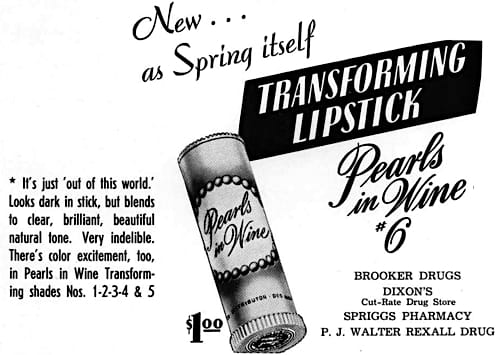
Above: 1945 Pearls in Wine Transforming Lipstick.
See also: Tangee
Pearls in Wine Transforming Lipstick was followed by Pearls in Wine Transforming Rouge, and Transforming Face Powder, both also coming in six numbered shades. Later products included Pearls in Wine Transforming Make-up, Compact Make-up, Face Cream, and Combination Cream. Some of these appear to have been repurposed from older lines. For example, Pearls in Wine Combination Cream looks to have been a based on Armand Blended Cream.
Pearls in Wine Transforming Lipstick: “A truly flattering, new kind of lipstick. Dark in the stick, it blends to a clear, beautiful, natural brilliance. Stays on longer, without drying lips. Amazingly indelible.” Shades: 1, 2, 3, 4, 5, and 6.
Pearls in Wine Transforming Rouge: “[I]n the same shades as the lipstick.” Shades: 1, 2, 3, 4, 5, and 6.
Pearls in Wine Transforming Face Powder: “No powdery look, just clinging flattery. … [S]preads smoothly as a finishing powder, may be applied as cake make-up with a damp sponge because of its ‘built-in’ foundation. Contains no ingredients known to be injurious or cause allergy.” Shades: 1, 2, 3, 4, 5, and 6.
Pearls in Wine Transforming Make-up: “[A] powder base and face powder in one . . . and is much easier to apply than ‘cake’.” Shades: 1, 2, 3, 4, 5, and 6.
Pearls in Wine Compact Make-up: “A puff-applied, downy-light, creme base
powder for a flawless, natural looking, smooth complexion. Purse compact with mirror and puff.” Shades: 1, 2, 3, 4, 5, and 6.
Pearls in Wine Liquid Make-up: “[A]dds youthful color, covers tiny imperfections, takes your powder beautifully and creates a flawless looking complexion that lasts for hours. Blends on with finger tips, non-drying, it’s good for your skin.”
Pearls in Wine Face Cream: “[C]ontaining a special ingredient, penetrates pores and removes facial grime as much as ten times better than cleansing creams that do not contain this ingredient.”
Pearls in Wine Combination Cream: “Use it for cleansing, as a night cream, for powder foundation, for lubrication. It is good for your skin whether it is dry or oily.”
By 1957, the Pearls in Wine range had added Pearls in Wine Dry Skin Creme, Hand Cream and Lotion, Bath Talcum, Spray Deodorant, Deodorant Cologne, Sunscreen, Parfum and Shampoo.
End of the line
Although 50% of the product development budget for Pearls in Wine was spent on promotion it failed to catch on with consumers. In 1950, in the face of continued falling sales, Carl Weeks merged Armand into Weeks & Leo – which, unlike Armand, was showing growth through its private-label business – and retired. The Armand range was later sold or licensed to West Cabot Cosmetics Associates, a corporation located in Central Islip, New York. This company was still selling Armand cosmetics in the 1960s but have ceased production.
Timeline
| 1930 | Florian, Inc. moved back to Des Moines. New Products: Symphonie Face Powder. |
| 1932 | Armand runs a series of sales schools in Iowa. |
| 1933 | New Canadian factory opened in East Windsor, Ontario. New Products: Dusting Powder; and Automatic Lipstick. |
| 1935 | D. Weeks & Company and D. C. Leo Company merge to form Weeks & Leo Company, Inc. New Products: Blended Cream; Symphonie Blended Cream; and Wind Blown Roses Powder. |
| 1936 | Florian et Armand (France) dissolved. Major repackaging of the Armand range. |
| 1942 | New Products: Play Proof; Liquid Leg Make-up; and Cream Leg Make-up. |
| 1943 | New Products: Stocking Stick. |
| 1945 | New Products: Pearls in Wine Transforming Lipstick. |
| 1950 | Armand Company merged into Weeks & Leo. |
First Posted: 10th October 2014
Last Update: 4th July 2023
Sources
The American perfumer & essential oil review. (1906-1955). New York: Robbins Perfumer Co. [etc.].
The drug and cosmetic industry. (1932-1997). New York: Harcourt Brace Jovanovich [etc.].
The Armand Company. (1932). Really lovely but she did not know . . . [Booklet]. USA: Author.
The Armand Company. (1935). Cosmetics. Their purpose and proper use [Booklet]. USA: Author.
The Armand Company. (1936). Give your face cream the cold water test [Booklet]. USA: Author.
The Armand Company. (c.1941). On the face powder and face cream question [Booklet]. USA: Author.
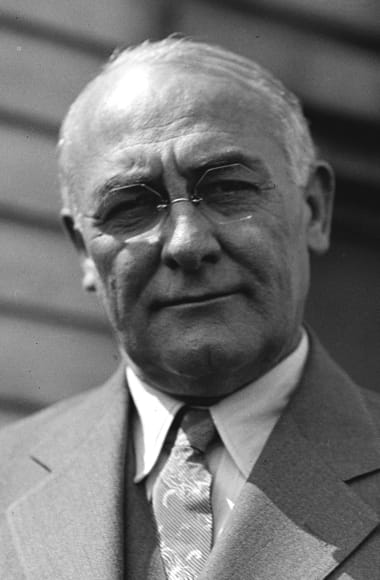
Carl Weeks [1876-1962].
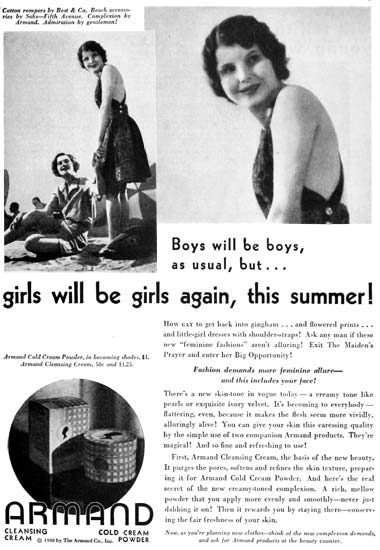
1930 Armand fashion/lifestyle campaign.
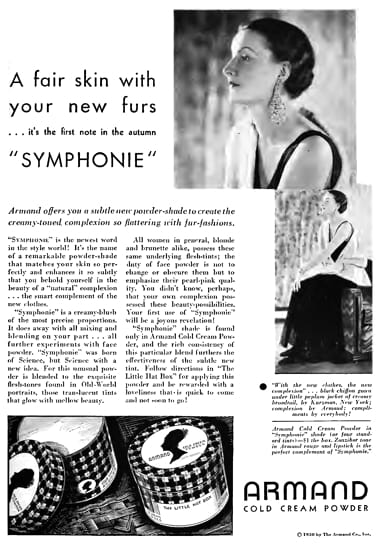
1930 Armand fashion/lifestyle campaign. Attempts to associate Armand cosmetics with fashion spreads in the 1930s unsuccessful as more attention was given to the clothing than the cosmetics.
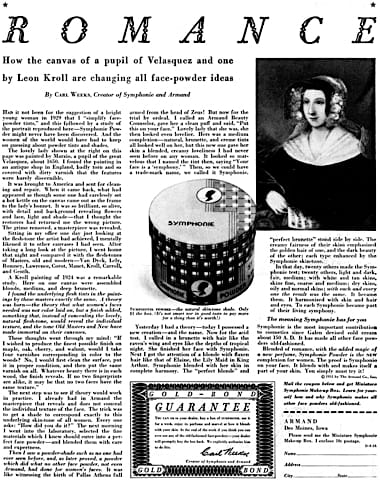
1931 Armand Symphonie Powder.
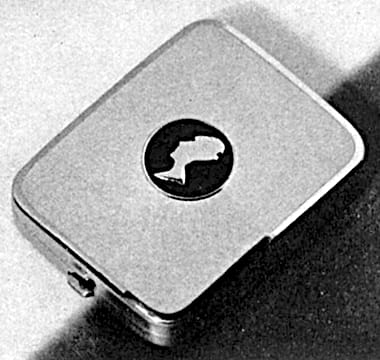
1931 Armand Symphonie Compact.

1931 Armand Symphonie Powder.
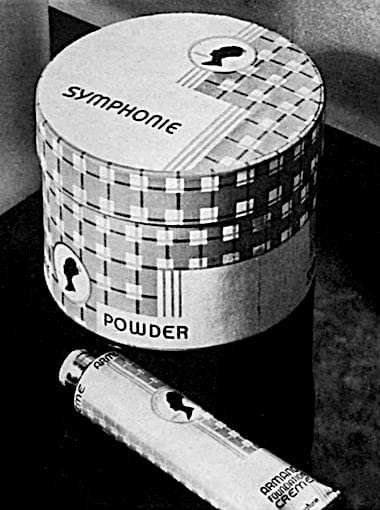
1932 Armand Symphonie Powder and Foundation Creme.

1933 Armand Symphonie Powder.
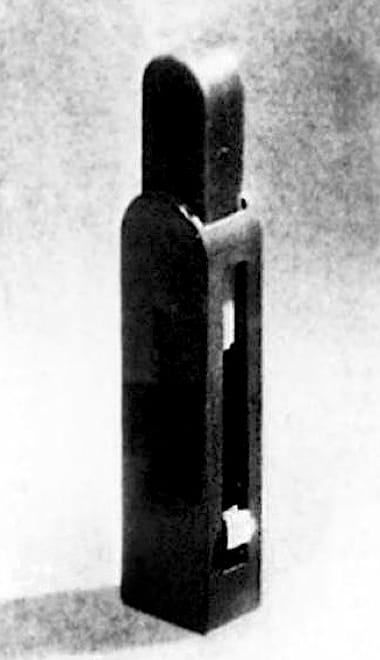
1933 Armand Automatic Lipstick. Packed in a red metal case with a sliding cover of black transparent cellulose.
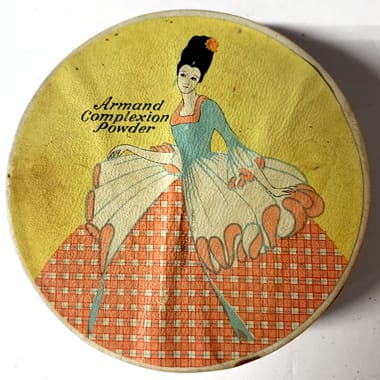
Armand Complexion Powder. This box was discontinued by 1936.

1938 Armand Blended All Purpose Cream. By this time Armand Blended Cream and was being advertised primarily for dry skin.
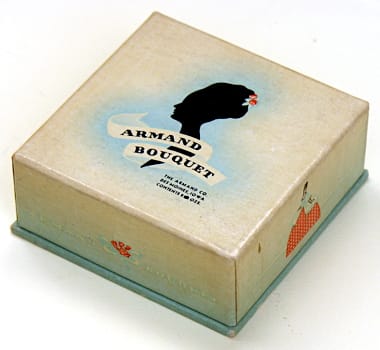
Armand Bouquet Powder scented with Peridore perfume in a box later than the one developed in 1936 with some older features reintroduced.

1942 Armand Play Proof Make-up, Face Powder, Blended Face Cream and Personal Powder Bar. Note the ‘ Accepted for advertising in publications of the American Medical Association’ seal.
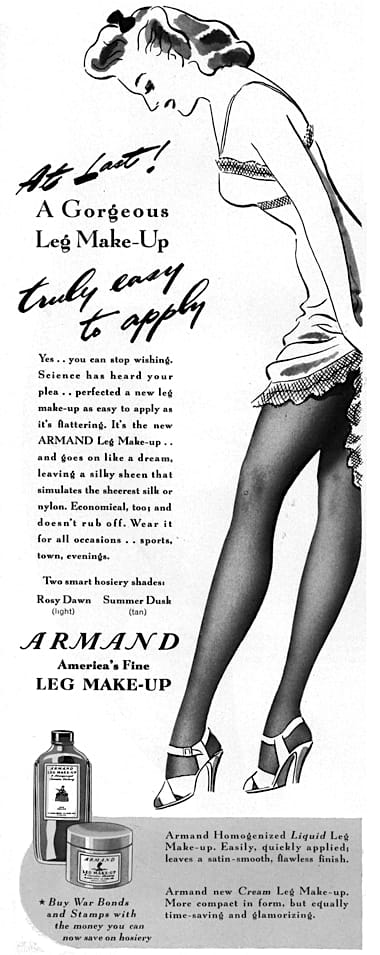
1943 Armand Leg Make-up.

1945 Armand ‘Stocking Stick’ leg makeup. It came in two shades Dawn and Dusk.
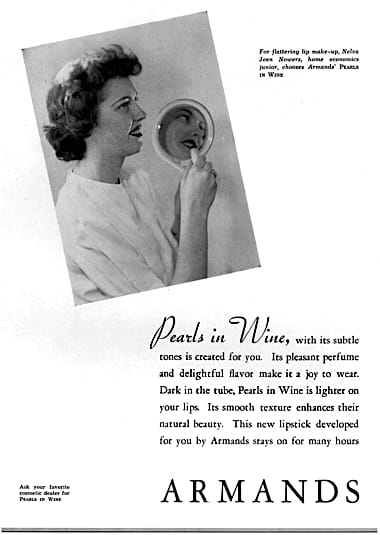
1945 Armand Pearls in Wine Lipstick.
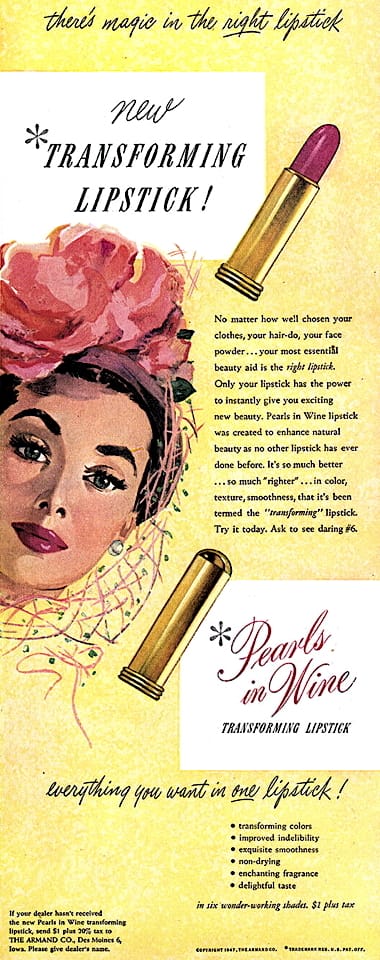
1947 Armand Pearls in Wine Transforming Lipstick.

1951 Armand Pearls in Wine.
